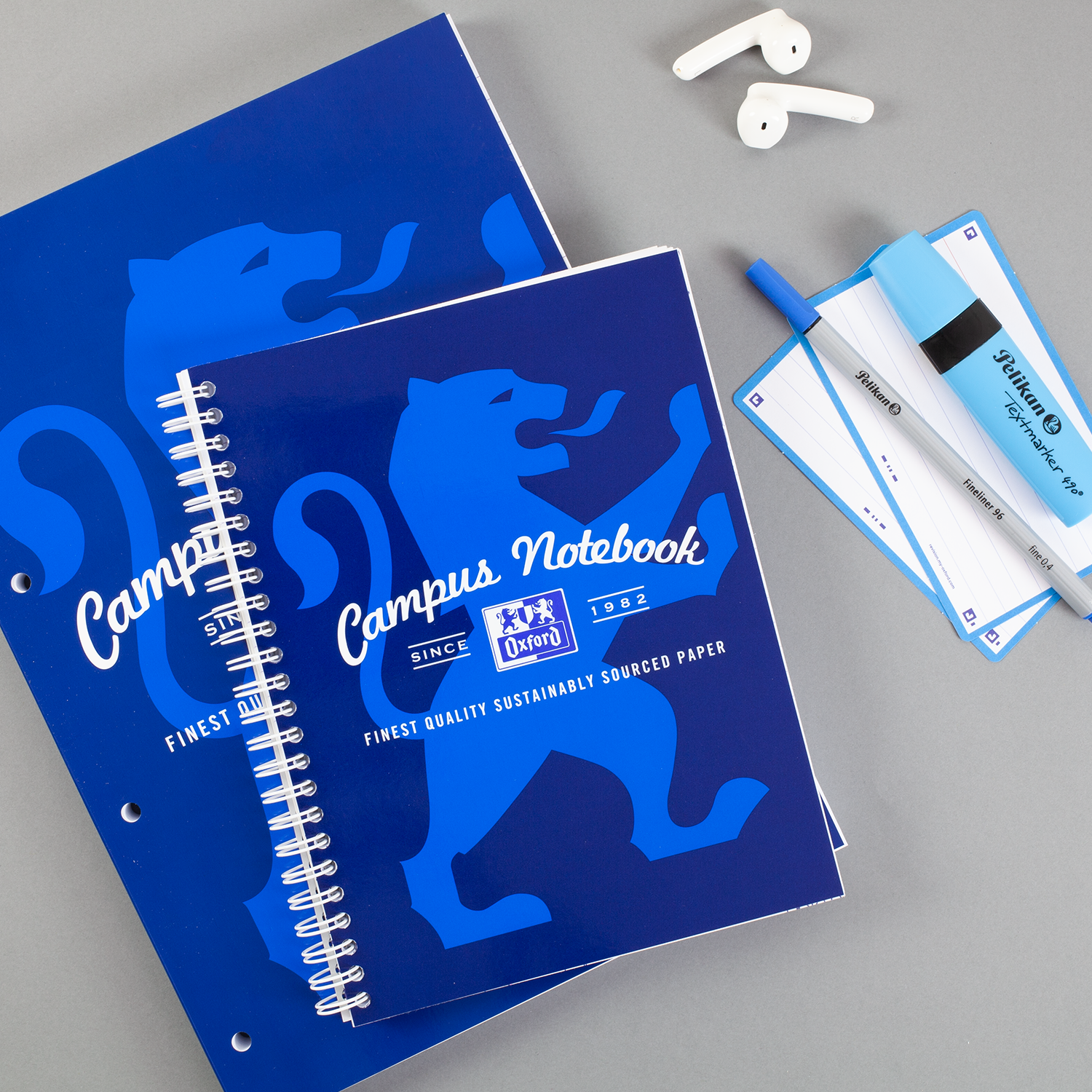Did you know that using colour is one of the most effective ways to make your revision sessions more engaging? Although it might seem simple at first, colour coding and colour coordination has been proven to enhance memory retention, boost productivity, and even increase your motivation to study. You may even already use colour coding techniques throughout you revision and not even know it!
Whether it be through bright, colourful notebooks like our Oxford Campus range, or trendy pastel folders to colour coordinate your notes, colour is at the heart of study.
Here’s how using colour can help you with your revision:
1. Colour Coding and Increasing Productivity
Colour coding your notes, and even colour coordinating your stationery, is one of the best ways to increase your productivity when studying or revising. There are many techniques for this including colour coding by subject, highlighting your priorities, and categorising information. Depending on how you prefer to study will alter how you can incorporate colour to maximise your productivity.
For example, if you are someone who revises by drawing mind maps, using different coloured pens to show connections between similar themes is a good way to visually show how your concepts connect. Our assorted colours Pelikan fineliners are a good place to start if you want to try this technique.
Using colour to manage the progress of your revision is also a good way to improve your productivity during your study sessions. It can be hard to keep track of what you have revised already and what you still need to go over, especially when you are in the middle of exam season. For this, a colour coordinated filing system is the perfect way to manage your time. You could colour coordinate your lever arch files or ring binder folders to signify what tasks you have completed and what you still have to work on. For example, aiming to fill your green lever arch file with completed revisions tasks from your red folder is a good goal to have.
You could also use punched pockets or popper wallets to manage the stages of your revision if you have several subjects to study for GCSEs or A-Levels. Our Oxford Popper Wallets and Punched Pockets have several colours perfect for organising notes.
Flash cards are another colourful and vibrant way to increase your productivity and visually see your progress. If you want to find out more on how to use colour within your flash card revision, check out our flash cards blog here.
And of course, beautifully colour coordinated stationery looks amazing on your desk too – helping you feel more positive about your studying in a space that reflects your personality.
 2. Revision Timetables and Organisation
2. Revision Timetables and Organisation
Perhaps one of the most overlooked revision techniques is making a revision timetable. Our Oxford Campus notebooks include a customisable revision timetable in the front of every notebook so you can stick to your plan no matter where you are studying.
Planning your study sessions is just as important as the content you revise, and colour is essential to this. Colour can help you organise what subjects you revise and when, as well as make your timetable more visually engaging. More subtly, incorporating colour in your timetable will mean your brain will make connections between a colour and a subject. So, if you have scheduled your math's revision sessions written in blue on your timetable, using blue stationery throughout your math's study will reinforce connections and help memory retention.
Alternatively, you can use colour to highlight what topics and subjects need more focus and work, what needs only some of your energy, and what tasks are easier and require less of your time. It’s also a good way to working out which topics you could confidently study with friends or classmates, and which ones you need minimum distractions. Highlighting your revision timetable in this way also relaxes your mindset and reduces the risk of burnout.
 3. Prioritising Using Highlighters
3. Prioritising Using Highlighters
If you’re looking for an efficient and quick way to revise, highlighting your notes is a great place to start. Whether you choose bright neon highlighters, or more subtle pastel ones, organising your notes in this way can be an incredibly useful study tool.
One of the best ways to utilise highlighters is by rating your knowledge on a subject in three distinct groups. Firstly, select which colours you are going to use. It’s best to choose colours that you know you will easily associate with your knowledge level. For example, red, orange, and green are great colours to use for this task.
Then, go through your subject notes topic by topic and highlight what areas you are more comfortable with in green (or any other colour you choose). These might be formulas you already know from memory, historical dates, or different theories you feel you have a good understanding. After you have eliminated these notes, then you can start to distinguish between which areas you feel you can turn green after some more work, and which subject you don’t feel confident with at all. Using orange and red highlighters for these notes will help you organise where to begin with your revision.
Did you know that Oxford’s app Scribzee also uses colour coding? Scribzee allows you to mark different pages of notes or flash cards with red, orange, or green so you know what you need to cover again when it comes to your revision. Therefore, if you don’t always have your paper notes with you, Scribzee stores them all along with your progress.
 These are only some ways you can use colour in your revision – there are many more tips and tricks to try out! Picking the right stationery for your study sessions is important, so make sure you keep consistency throughout and don’t over complicate it. Your revision is completely up to you whatever way you choose. Good luck!
These are only some ways you can use colour in your revision – there are many more tips and tricks to try out! Picking the right stationery for your study sessions is important, so make sure you keep consistency throughout and don’t over complicate it. Your revision is completely up to you whatever way you choose. Good luck!

